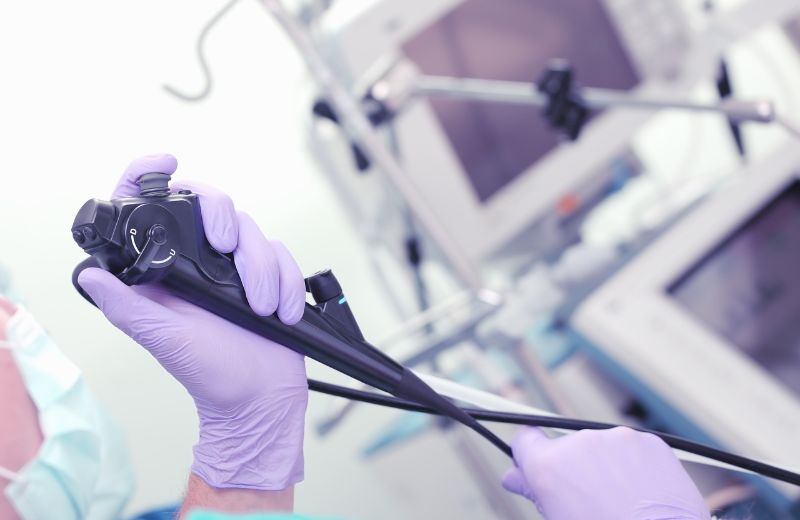
UGI Endoscopy: Upper Gastrointestinal (UGI) endoscopy involves examining the esophagus, stomach, and duodenum using a flexible scope. It allows for the detection and treatment of conditions like ulcers, gastritis, and tumors through procedures such as biopsy and polypectomy.
UGI Endoscopy: Upper Gastrointestinal (UGI) endoscopy involves examining the esophagus, stomach, and duodenum using a flexible scope. It allows for the detection and treatment of conditions like ulcers, gastritis, and tumors through procedures such as biopsy and polypectomy.
Colonoscopy: Colonoscopy is a procedure to examine the large intestine for abnormalities. It aids in diagnosing and treating conditions like colorectal cancer, polyps, and inflammatory bowel disease. Therapeutic interventions include polyp removal, biopsy, and the control of bleeding.
ERCP (Endoscopic Retrograde Cholangiopancreatography): ERCP is used to diagnose and treat disorders of the bile and pancreatic ducts. Therapeutic procedures involve removing gallstones, placing stents, and draining blocked ducts, addressing conditions like gallstones, tumors, and strictures.
EUS (Endoscopic Ultrasound): Endoscopic Ultrasound is a diagnostic and therapeutic tool that combines endoscopy and ultrasound imaging. It aids in visualizing and obtaining tissue samples from the digestive tract and adjacent structures. EUS can guide fine-needle aspirations for biopsies and treat conditions such as pancreatic cysts.
ESD (Endoscopic Submucosal Dissection): ESD is a technique for removing early-stage gastrointestinal tumors by dissecting them from the underlying layers. This minimally invasive procedure allows for en-bloc resection of lesions, promoting better outcomes and reducing the need for surgery.
EMR (Endoscopic Mucosal Resection): Endoscopic Mucosal Resection is a procedure to remove abnormal or cancerous tissue from the mucosal layer of the digestive tract. EMR is employed to treat early-stage cancers, large polyps, and other lesions, offering a less invasive alternative to surgery.
POEM (Peroral Endoscopic Myotomy): POEM is a procedure to treat achalasia, a condition affecting the esophagus’ ability to move food into the stomach. It involves creating a myotomy by dissecting the inner circular muscle layer, allowing for improved swallowing and relief of symptoms.
Endoscopic Gastrojejunostomy: Endoscopic Gastrojejunostomy is a procedure to create an opening between the stomach and the jejunum. It is used for bypassing obstructions in the upper digestive tract, often caused by tumors. This technique can alleviate symptoms and improve nutritional intake in certain cases.
Enteral Stenting: Enteral Stenting involves placing a stent within the gastrointestinal tract to alleviate obstructions caused by tumors or strictures. This minimally invasive procedure helps restore the normal flow of fluids and food, providing relief from symptoms such as nausea, vomiting, and abdominal pain.
Copyright ©2023 Design & Developed by Manish Sharma